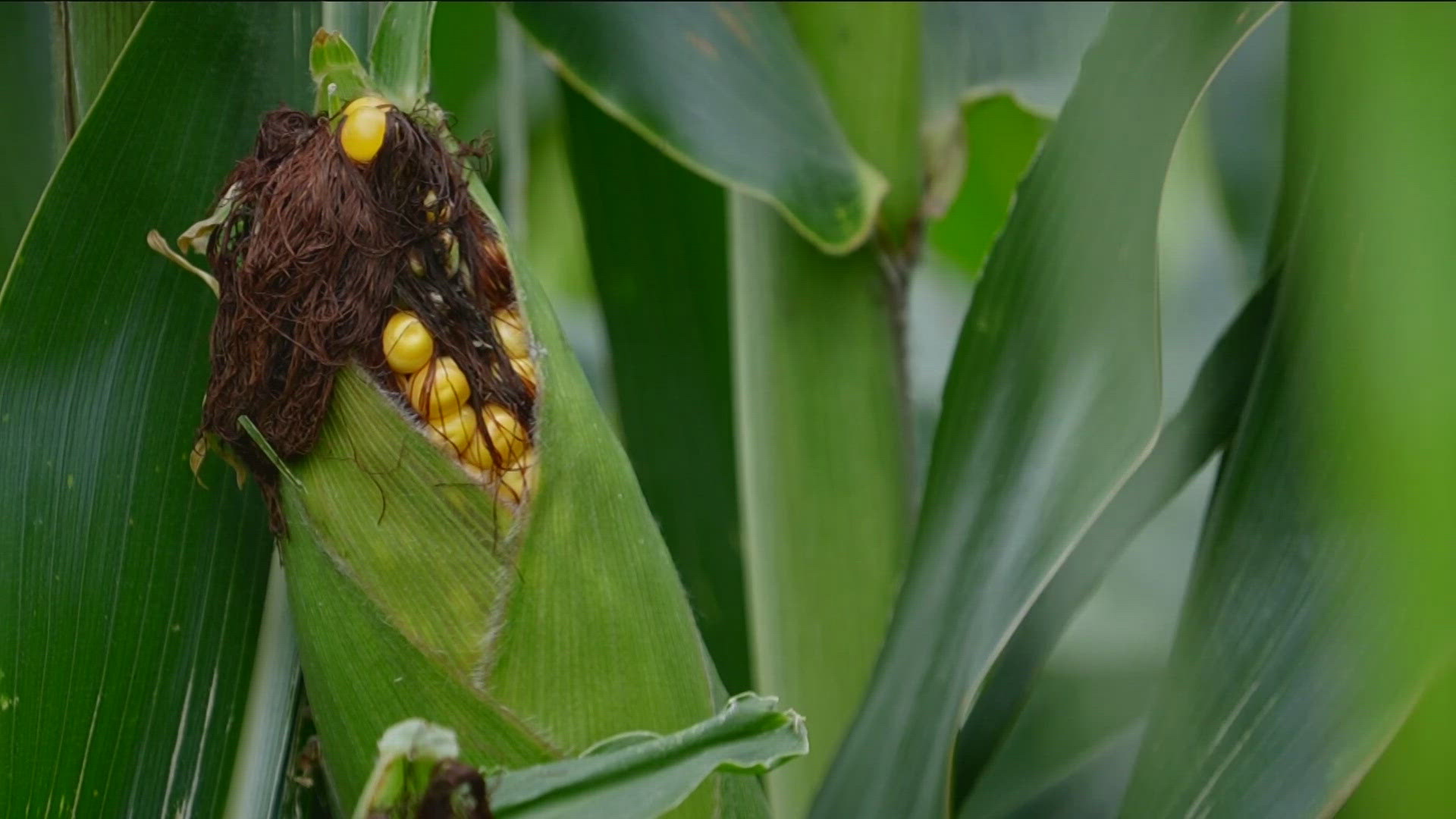MINNEAPOLIS — Folks, it's time to acknowledge the corn — the sweaty corn.
If you've been on social media over the past few days, you've likely scrolled across at least one post explaining the phenomenon of "corn sweat," and how it historically impacts weather like the kind we had this week in the Midwest.
As Minnesota's recent sauna-like conditions threatened to choke out State Fair-goers and kids savoring their last seconds of summer, we lent an ear to the experts as they explained the science behind corn's a-maize-ing perspiring process.
What is corn "sweat"?
No, it isn't like the feeling Joey Tribbiani got after eating an entire turkey for Thanksgiving dinner.
Corn, like other plants, goes through a process called "evapotranspiration," in which it releases water through its leaves before the moisture evaporates into the air.
University of Minnesota extension educator in field crops David Nicholai explains, "It’s not actually corn that’s sweating; it’s water movement coming out of the soil, going up through the plant, out through the leaves with a little opening — it's called stomata on the leaf’s surface — and basically, the plant does that to cool itself."
How does it impact our climate?
Although the process of evapotranspiration has been around since the dawn of the plant kingdom, cultivating corn across America's Heartland en masse is relatively new in the grand scheme of existence.
The USDA reports approximately 90 million acres of land nationally is dedicated to corn as far as the eye can see — Iowa, Illinois, Minnesota and Nebraska making up the bulk of the bushel.
KARE 11 Meteorologist Ben Dery said when you have an area that large contributing a localized moisture source into the air, it should come as no shuck that the addition of moisture could have an impact on our already soggy Minnesota summers.
More water in the air means higher dew points, which can equate to that "sticky" feeling we might get when rising temperatures coincide. More moisture in the air can also act as fuel for events like thunderstorms, which can lead to heavier downpours in late summer — a time when corn plants are also fully mature and at their peak.
According to Nicholai, these cobs aren't the only crops breaking a sweat.
"Soybeans, right now, they're peaking," he said. "So, there's a lot of field crops that can be contributing to it, but probably the bigger phenomenon is weather systems that move into the upper Midwest and Minnesota."
Why is the phenomenon more specific to the Midwest?
Midwesterners may have heard the term "Corn Belt" a time or two, which refers to the region of the United States in which crops like corn and soybean, among others, are produced and harvested at an elevated rate compared to other parts of the country.
Of course, we know Minnesota plays a considerable role in the U.S. corn economy, as well as Illinois, Indiana, Michigan, Missouri, Ohio, Wisconsin, and top two producers, Iowa and Illinois. According to the USDA, Iowa and Illinois account for about one-third of the country's corn crops. The agency added the United States, as a whole, is the largest producer, consumer and exporter of the feed grain in the entire world.
Now take into consideration that nearly 9 million acres of Minnesota farmland alone boasts row after row of sweaty corn excretion. Dery said combine that with the aforementioned dew points already on the rise this time of year, and you'll find it's no coincidence the dew point map almost mirrors a map of the Corn Belt.

